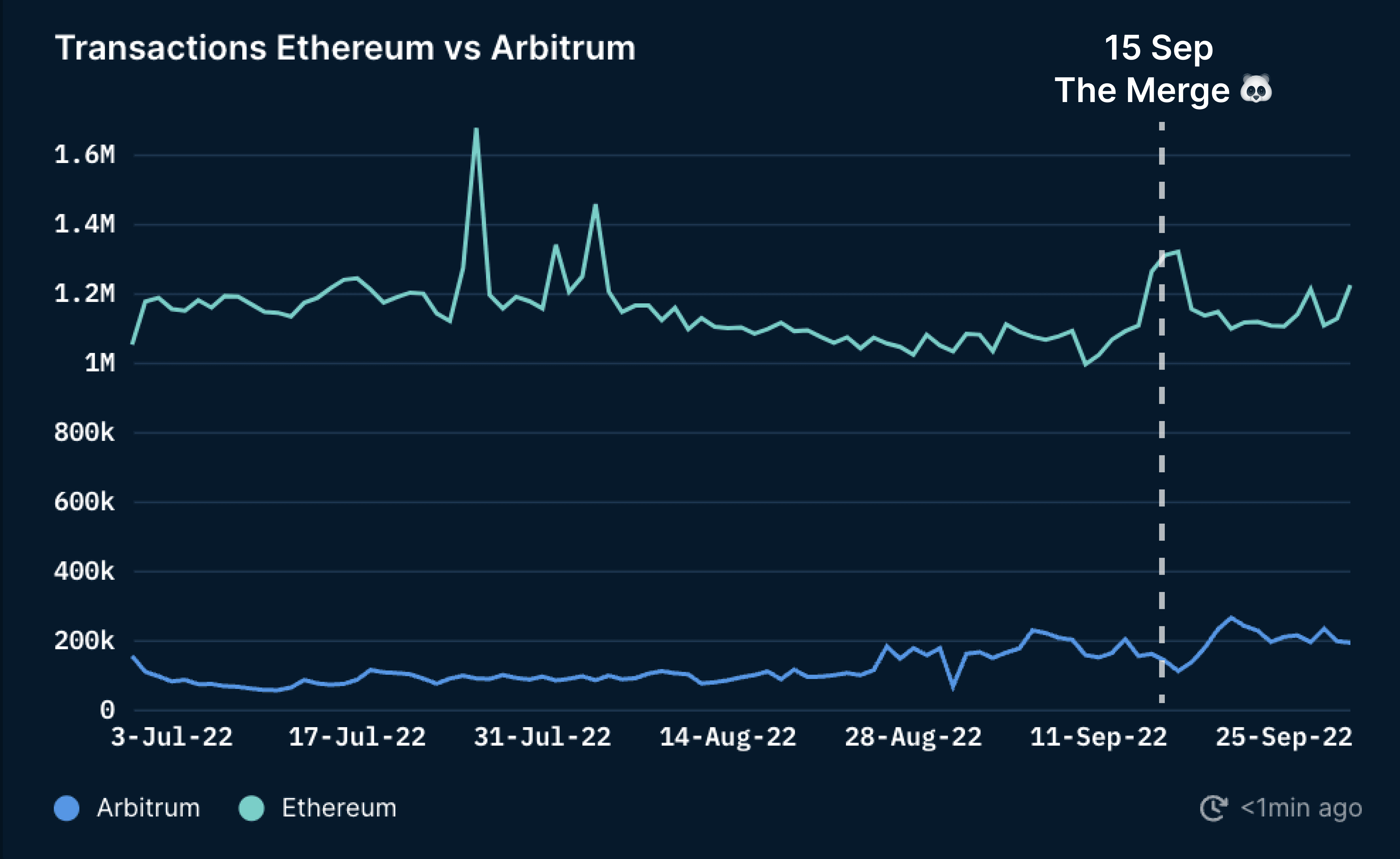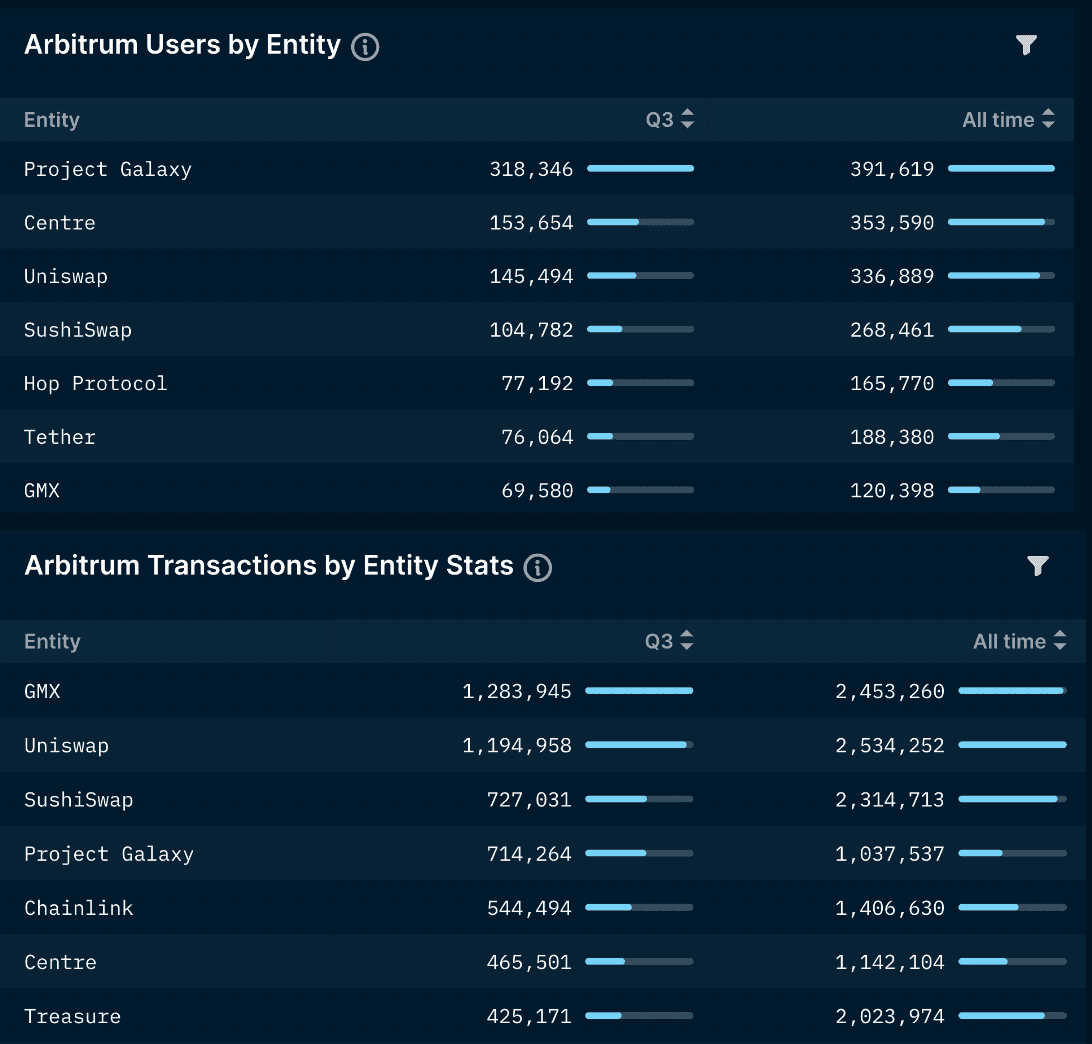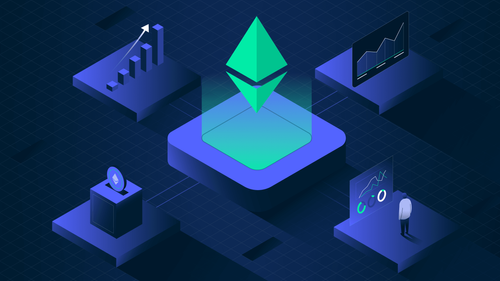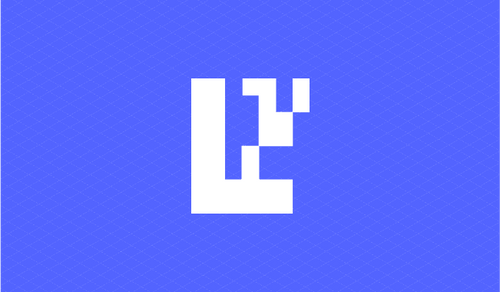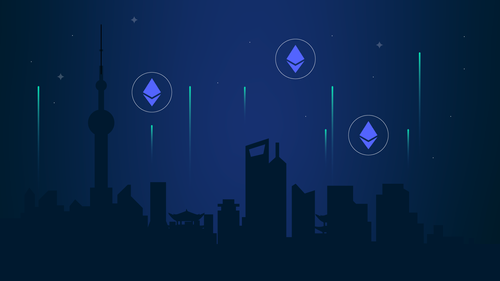Overview
Arbitrum One is an Optimistic rollup and one of the many scaling solutions for the Ethereum blockchain. Optimistic rollups assume that validators are not malicious and transactions are posted correctly. To ensure that assertions are valid, however, anyone can challenge the validity of a claim for approximately a week. The dispute is then narrowed down to a single line of instruction and executed on the L1 chain to verify correctness. The fraudulent node would have its stake slashed, with its portion going to the winner of the challenge. The process of presenting evidence of an incorrect state transition is called fraud proofs. This is the basis of how an Optimistic rollup like Arbitrum One works, reducing the workload on the main L1 chain as not all the transactions need to be re-executed and incentivizing nodes to be well-behaved.
Check out Nansen Alpha’s previous report on Arbitrum and other scaling solutions for Ethereum here.
Key Developments
Arbitrum Nitro
- Arbitrum One migrated to the Nitro stack on Sep 1, 2022 after a network pause.
- Arbitrum Nitro features several changes to the current AVM architecture and ArbOS.
- The popular WebAssembly (WASM) architecture would replace the older, custom-designed AVM architecture.
- Custom-built EVM emulators would also be replaced by Geth, one of the most popular software clients for running an Ethereum node.
- Lastly, ArbOS would be reduced in size and rewritten in Go, resulting in a more optimized batch and compression system for transactions.
- With these upgrades in Nitro, the Arbitrum team expects a 7x improvement in throughput, along with significantly lower fees.
- Using Nansen Query, the average gas paid on a transaction just before and after Nitro was around $0.35 and $0.08 respectively, indicating a reduction of almost 75% in transaction costs since the upgrade.
- Arbitrum Odyssey, an interactive exploration of the Arbitrum One ecosystem, which was slated to resume when Nitro was integrated, is currently still paused.
OpenSea Integration
- On Sep 20, 2022, OpenSea tweeted that it would offer support for Arbitrum One NFTs, in line with efforts to provide users access to their preferred chains.
- Some notable NFT collections on Arbitrum include Smolverse and GMX Blueberry Club.
Guild Initiatives
- Arbitrum started a community guild initiative in Aug 2022, to reward participants with Discord user roles for holding a small amount of each dApp’s token.
- NFT owners would also benefit by earning the same role in Discord, simply for ownership of certain collections like Treasure’s Smol or Dopex’s Diamond Pepe.
- A creative user, bagelface.eth, created a smart contract that allowed users to purchase all the tokens needed for the guild roles in one easy transaction.
Ecosystem
Arbitrum One hosts a dynamic ecosystem of dApps, which can be viewed on the Arbitrum One Portal directory.
One of the notable integrations announced this quarter is Opensea, one of the most popular NFT marketplaces. With prominent collections like Smolverse and GMX Blueberry Club, the announcement provided more exposure to NFTs on the chain and followed with a spike in daily transactions.
Additionally, Magna, a token distribution platform that aims to improve automation and minimize the room for error in such processes. Magna recently completed a $15m seed round with participants ranging from individuals to different chains like Polygon and Avalanche. With Arbitrum’s successful migration to the Nitro stack, users can look forward to more of these opportunities within the ecosystem.
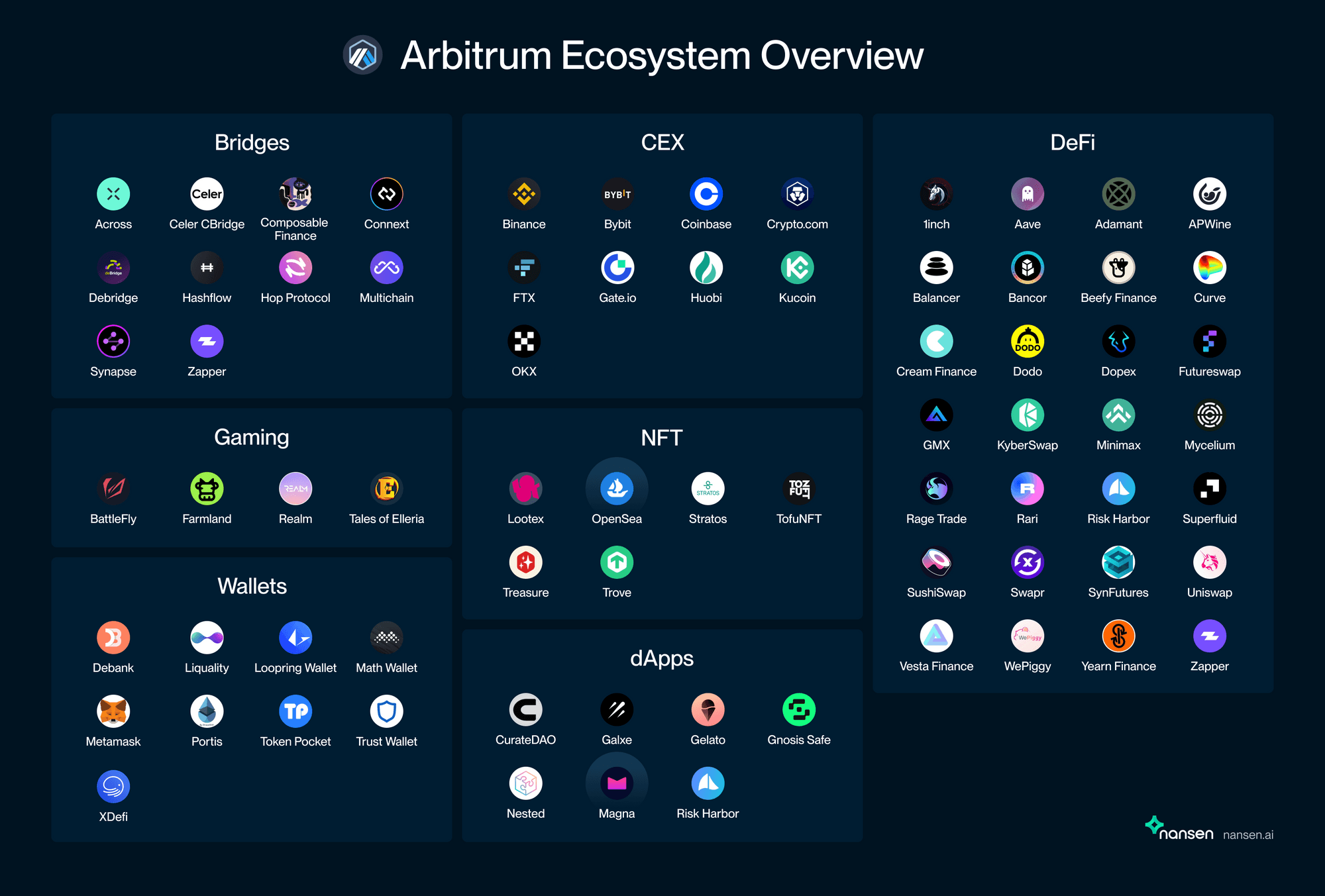
Nansen On-chain Data
Daily Transactions
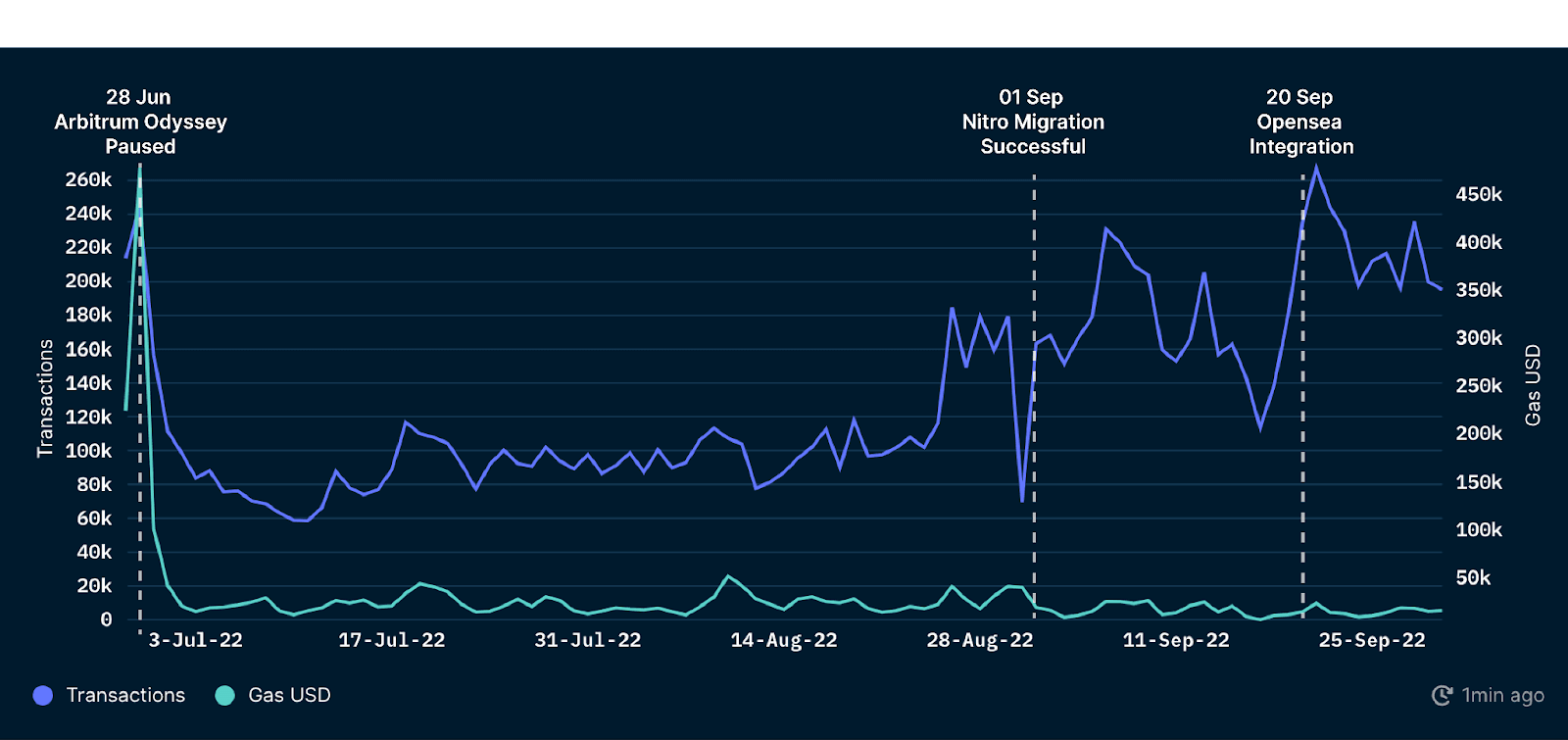
Following up from the pause of Arbitrum Odyssey in late Q2, transactions on Arbitrum had dipped to the 80k level and picked up slowly towards the migration to the Nitro stack while gas volume stayed low since the pause of Arbitrum Odyssey. Transactions also increased sharply with the announcement of the integration of Arbitrum on OpenSea.
Daily Transactions (vs Ethereum)
While the number of transactions on Arbitrum One was lower, Ethereum saw several spikes from late July to early August, which could be attributed to price volatility. Ethereum’s transactions fell 10% on Jul 27, 2022. Another spike in the number of transactions occurred on Sep 11, 2022, leading up to The Merge that occurred just 4 days after and rumours over an airdrop for the ETH Proof of Work (ETH PoW) token.
Smart Money Segments on Arbitrum
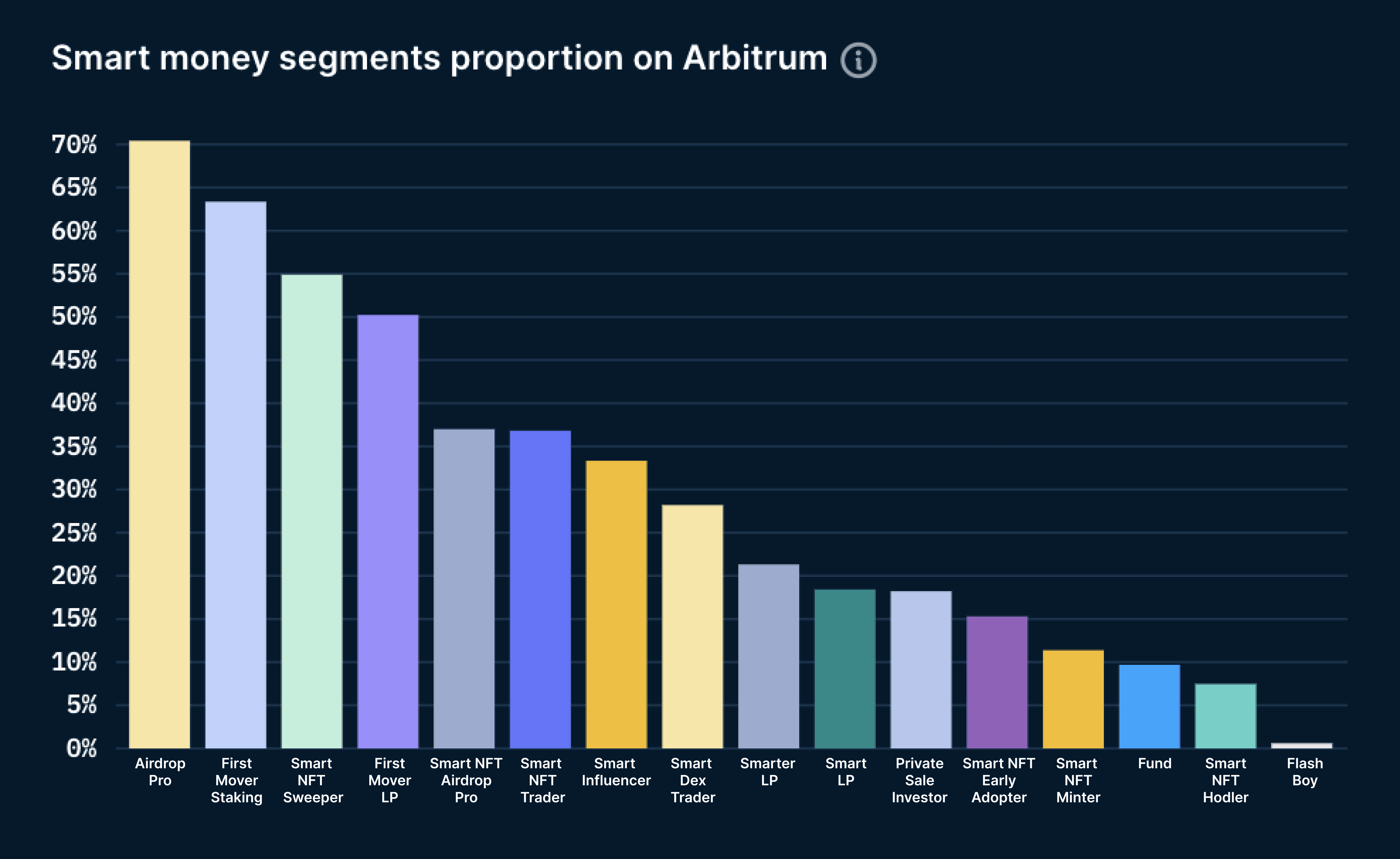
Comparing the addresses that have the Smart Money label on Ethereum with the addresses on Arbitrum One, the “Airdrop Pro” segment had once again the largest percentage of overlap due to speculations over an airdrop from Arbitrum. While there have been multiple threads on Twitter detailing the steps to qualify, the Arbitrum team had not made any announcements at the time of writing.
Check out this page for how these categories are defined and how you can use these labels on Nansen!
Top Entities by Users and Transactions
Utilizing Nansen labels to analyze the top entities by transactions and users, Project Galaxy, a web3 credential data network, had the highest number of unique users in Q3. They had since rebranded to “Galxe” in Sep 2022 and had continued to collaborate with other chains and protocols, in line with their vision to build a comprehensive web3 identity for their users. While GMX ranked 7th in the list for unique users, it was ranked as the top entity alongside Uniswap.
Notable Projects
Rage Trade
- Rage Trade is an ETH perpetual trading platform built on top of Uniswap V3 to improve capital efficiency.
- This is achieved using omnichain recycled liquidity and their 80-20 Vaults.
- Rage’s recycled liquidity is achieved by consolidating ETH and USD liquidity across different chains and protocols, such as Curve and GMX, to provide liquidity into Rage’s ETH perp.
- The second part of this strategy is the 80-20 Vaults, which are split into two parts:
- 80% of the Total Value Locked (TVL) earns yield on an external protocol
- 20% of the TVL would be deposited as liquidity on Rage and earns revenue similar to that of Uniswap V2
- Besides the deposited LP shares generating extra yield, users also experience an isolated platform risk, since at least 80% of existing assets are still earning yield outside Rage.
- However, possible risks of this strategy would include Arbitrum downtime and impermanent loss in the yield-generating assets.
Vesta Finance
- Vesta is a lending protocol that allows users to borrow efficiently against their collateral and mint Vesta’s stablecoin, VST.
- VST as a stablecoin aims to maintain its value of 1 VST = 1 USD through:
- Over-collateralization of loans where the value locked is more than the borrowed amount;
- Stablecoins are redeemable and transferable;
- Deliberate control by the system to manage VST minting through a variable issuance fee.
- Vesta also handles liquidations using a Stability Pool, which helps to absorb debt from liquidations and rewards VST depositors with the liquidated collateral.
- The upcoming roadmap of Vesta includes building a leverage trading user interface as well as an internal DEX aggregator.
Closing Thoughts
Interest in the Arbitrum ecosystem has been steadily increasing in the last quarter. There were a few major catalysts like the Odyssey and migration to Nitro Stack over the past few months. Community building through the guild integration as well as expanding the NFT ecosystem into OpenSea had also proven to be successful endeavors by the Arbitrum team to strengthen the ties between existing users and bring in new audiences. With a strong backbone of their enriching community and developer activity, Arbitrum is certainly well-positioned to be a viable scaling solution for the Ethereum chain.


